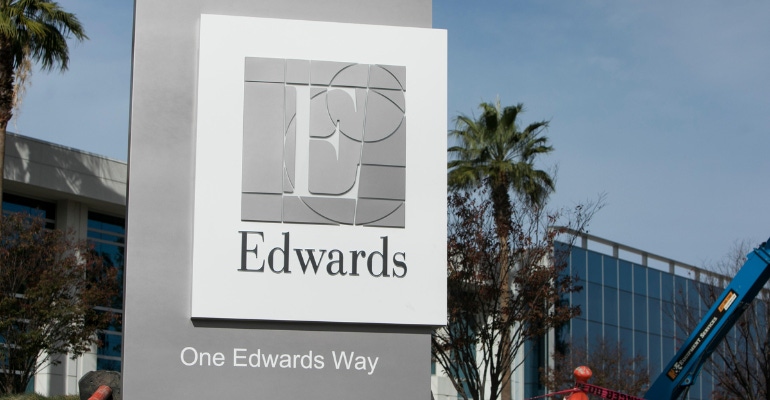Hospital Staffing Shortages Hamper TAVR Recovery
Edwards Lifesciences missed revenue expectations in 2Q due to a slower recovery in the transcatheter aortic valve replacement (TAVR) market.
August 1, 2022

U.S. hospital staffing shortages, as well as foreign currency headwinds, hampered procedure volumes in transcatheter aortic valve replacement (TAVR) in the second quarter, Edwards Lifesciences CEO Mike Mussallem told investors Thursday.
These headwinds resulted in lower-than-expected TAVR sales for the Irvine, CA-based company, although it still represented Edwards' highest quarter of TAVR sales. Mussallem said the company estimates that global TAVR procedure growth was comparable with the company's growth in the second quarter. TAVR sales were also impacted by temporary contrast agent shortages, he noted.
"We now anticipate that these challenges are likely to persist throughout 2022," Mussallem said, according to transcripts on The Motley Fool. "And as a result, we are lowering our second half outlook to more realistically reflect the current operating environment. Although the near-term environment remains uncertain, we are unwavering in our long-term pursuit of groundbreaking innovations. We're investing to achieve breakthrough therapies that create significant value for patients in the healthcare systems, enabling strong organic sales growth."
The company now expects underlying TAVR sales growth of around 10% in full year 2022 versus the previous expectations for 12% to 15% growth in TAVR.
"Longer-term, we remain confident in this large global opportunity and that it will double to $10 billion by 2028, which implies a compounded annual growth rate in the low double-digit range," Mussallem said.
More specifically, CFO Scott Ullem said total Edwards sales in 2022 are expected to be between $5.35 billion and $5.55 billion, with TAVR sales being between $3.5 billion and $3.7 billion.
There will be casualties as patients wait for TAVR procedures
"TAVR is such a necessary procedure for these patients," Robbie Marcus, a medtech analyst at J.P. Morgan, said during the Q&A portion of Edwards' earnings call. "And it's sad to see it slow down like this, but it's understandable given how many steps are involved in the patient population involved."
He asked Mussallem about the "early funnel" with patient visits to doctors and diagnosis, in an effort to get a sense of where the bottleneck is occurring.
"What we're feeling right now is different than the early days of the pandemic," Mussallem said. "In the early days of the pandemic, yes, there was impact on hospital capacity, but you also had patients that were just concerned about coming into the system and they stayed away."
Now, he said, patients are entering the system and are queued up to go through, but hospitals just can't handle all the patients.
"And so that care is being postponed," Mussallem said. "You're right, given that this disease is so deadly, it is very concerning because we know these patients don't wait well and there are going to be some casualties."
Larry Wood, global leader of the TAVR business at Edwards, added that it's not a matter of a lack of beds as it was in the beginning of the COVID-19 pandemic.
"Hospitals have beds, they have capacity. They just don't have staff," he said.
Wood also noted that some of the hospital staffing challenges come from staff that have to take time off to isolate after a positive COVID test. While that doesn't account for the entire problem, it does appear to be exacerbating it.
"But you're right, the patients don't wait well. And we were already dealing with undertreatment of [aortic stenosis] before the pandemic hit and certainly this hasn't made it better," Wood said. "But these patients deserve therapy, and we're hoping this returns back to more normal state soon."
About the Author(s)
You May Also Like



.png?width=300&auto=webp&quality=80&disable=upscale)
